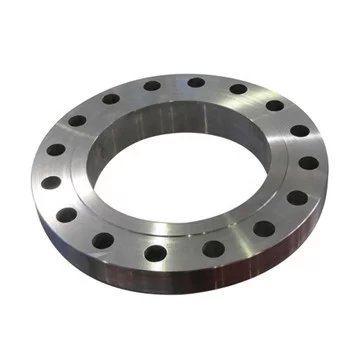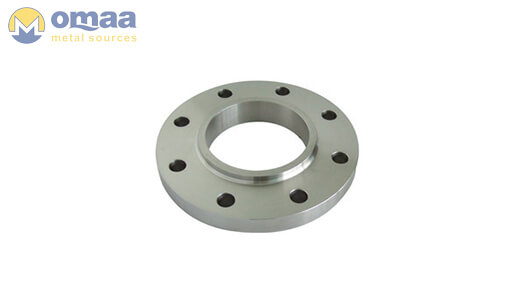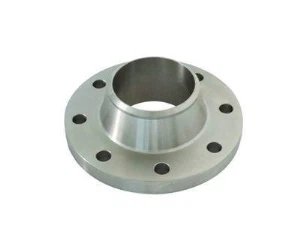Exporters of BS 4504 Flanges, Ready Stock of BS 4504 Forged Flange, BS 4504 Flanges, Check Sizes And Dimensions Of BS 4504 Socket Weld Flange.
BS 4504 flanges Specification
Size: 1/2" (15 NB) to 48" (1200NB) DN10~DN5000
Schedule: SCH10, SCH 40, SCH 80, SCH 160 To SCH XXS
Dimension Standard: ANSI/ASME B16.5, B 16.47 Series A & B,
B16.48, BS4504, BS 10, EN-1092, DIN, etc.
Type: Ring Joint Flange (RTJ), Flat Face Flange (FF),
Raised Face Flange (RF), Male and Female Flange (M & F),
Lap Joint Flange, Large and Small Tongue-and-Groove Flange (T & G)
Pressure rating: 150#, 300#, 600#, 900#, 1500#, 2500#,
PN6, PN10, PN16, PN25, PN40, PN64 etc.
BS 4504 is a widely recognized standard for flanges, specifying their dimensions, materials, and other essential characteristics. These flanges are commonly used in various industrial applications due to their reliability, compatibility, and ease of installation. BS 4504 flanges exhibit several properties that suit different piping systems.
One of the key properties of BS 4504 flanges is their dimensional accuracy. These flanges adhere to specific dimensions and face types, ensuring a precise fit with corresponding mating components. The standard defines various types, including flat face, raised face, and ring joint face, each serving different sealing purposes.
BS 4504 flanges can be manufactured out of various materials, such as carbon steel, stainless steel, and alloy steel, based on the application's specific requirements, such as temperature, corrosion resistance, and mechanical strength. The standard offers material selection guidelines to guarantee the flanges' longevity and functioning capability in diverse conditions.
BS 4504 Flanges Specifications
| ASME B16.5 BS 4504 Flange Size Chart | 1/2" (15 NB) to 48" (1200NB) DN10~DN5000 |
|---|---|
| BS 4504 Flange Standards | ANSI/ASME B16.5, B16.47 Series A & B, B16.48, BS4504, BS 10, EN-1092, DIN, ASME Flanges, ASME Flanges, BS Flanges, DIN Flanges, EN Flanges, GOST Flange, ASME/ASME B16.5/16.36/16.47A/16.47B, MSS S44, ISO70051, JISB2220, BS1560-3.1, API7S-15, API7S-43, API605, EN1092 |
| BS 4504 Flange Pressure Rating ANSI | Class 150 LBS, 300 LBS, 600 LBS, 900 LBS, 1500 LBS, 2500 LBS |
| BS 4504 Flange Pressure Calculation in DIN | 6Bar 10Bar 16Bar 25Bar 40Bar / PN6 PN10 PN16 PN25 PN40, PN64 |
| JIS | 5K, 10 K, 16 K 20 K, 30 K, 40 K, 63 K |
| UNI | 6Bar 10Bar 16Bar 25Bar 40Bar |
| EN | 6Bar 10Bar 16Bar 25Bar 40Bar |
| Coating | Oil Black Paint, Anti-rust Paint, Zinc Plated, Yellow Transparent, Cold and Hot Dip Galvanized |
| Most common types of BS 4504 Flange | Forged / Threaded / Screwed / Plate |
| Test Certificates | EN 10204/3.1B Raw Materials Certificate 100% Radiography Test Report Third Party Inspection Report, etc |
| Production technique |
|
| Connect Type/ Flange Face Type | Raised Face (RF), Ring Type Joint (RTJ), Flat Face (FF), Large Male-Female (LMF), Lap-Joint Face (LJF), Small Male-Female (SMF), Small Tongue, Large Tongue & Groove, , Groove |
| Special design | As per your drawing AS, ANSI, BS, DIN and JIS |
| Test | Direct-reading Spectrograph, Hydrostatic testing machine, X-ray detector, UI trasonic flaw detector, Magnetic particle detector |
| Equipment | Press machine, Bending machine, Pushing Machine, electric bevelling machine, Sand-blasting machine etc |
| Origin | Indian / West Europe / Japan / USA / Korean |
| Manufacturer of | ASME DIN, GOST, JIS, UNI, BS, AS2129, AWWA, EN, SABS, NFE etc.
|
| BS 4504 Flange Uses & application |
|
| Export to | Ireland, Singapore, Indonesia, Ukraine, Saudi Arabia, Spain, Canada, USA, Brazil, Thailand, Korea, Iran, India, Egypt, Oman, Dubai, Peru, etc |
| Material Test Certificates (MTC) as per EN 10204 3.1 and EN 10204 3.2, Test Certificates certifying NACE MR0103, NACE MR0175 | |
Additionally, BS 4504 flanges exhibit excellent sealing capabilities. The raised face flanges, for example, create a tight seal when compressed against a gasket. This feature minimises the risk of leakage and enhances the overall reliability of the piping system. The standard also specifies gasket dimensions and materials, ensuring compatibility with the flanges.
Moreover, BS 4504 flanges are designed to facilitate easy installation and maintenance. The standard defines standard bolt sizes, hole patterns, and flange face finishes, simplifying the assembly process. The standardised dimensions and design features allow for interchangeability and ease of replacement, minimising downtime during repairs or modifications.









